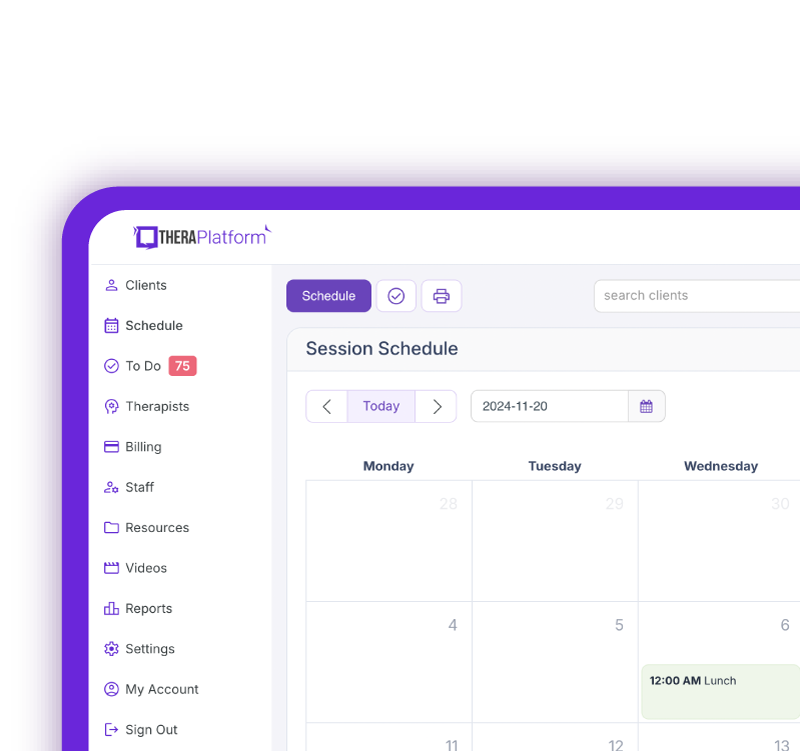How to set private practice fees

How to set private practice fees is one of the most important questions to ask yourself in establishing a thriving private practice. Ensuring competitive and fair pricing allows for profitability and effectively meets client needs. Well-structured rates reflect the value of care provided while supporting the financial sustainability of the business.
Summary
- Set fees that balance value and sustainability: Your rates should reflect the value of your services while covering all business expenses and ensuring fair compensation for your time and expertise.
- Factor in key pricing elements: Consider competitor rates, geographic location, service complexity, and insurance reimbursement when determining your pricing structure.
- Choose the right pricing model: Fee-for-service, sliding scale, package deals, memberships, and insurance billing are all viable models depending on your clientele and business goals.
- Maintain transparency and revisit regularly: Communicate rates clearly with clients, update them on changes in advance, and review pricing annually to stay aligned with inflation, expenses, and market trends. Download my free rate increase letter template.
- Using an EHR for invoicing and communication can help you manage the revenue side of your business.
Streamline your practice with One EHR
- Scheduling
- Flexible notes
- Template library
- Billing & payments
- Insurance claims
- Client portal
- Telehealth
- E-fax

It is essential to consider how to set private practice fees for services, specifically including balancing cost-effectiveness for clients and sustainable business operations. This can build trust with clients to ensure and maintain a thriving private practice.
How to set private practice fees
Determining the right price for your services involves considering several important factors.
Some key factors to consider and analyze include:
- Researching competitor rates
- Geographic location
- The value of services
- Level of expertise provided
- Charging clients based on the duration and complexity of services.
Not all services should be priced the same. Increased complexity sessions, such as comprehensive assessments or specialized therapy, should be priced higher than standard sessions. Being transparent about how the time and effort involved impact rates is vital.
It is also important to consider the essential business expenses such as rent, utilities, equipment, software, and insurance.
For insurance, familiarize yourself with payer-specific rates and adjust your charges to accommodate both insurance clients and those paying out-of-pocket.
Compensation is another key factor. Include salaries, benefits, and payroll taxes in your calculations if you have a team or are a solo entrepreneur. Your time and expertise are valuable, so ensure your pricing reflects fair compensation for yourself and/or your staff.
By considering these different types of costs such as fixed and variable expenses, you can ensure your rates cover the expenses of operating your practice and also ensure that your services are accessible and valued by your clients.
Pricing models for setting private practice fees
When starting a private practice and asking yourself how to set private practice fees, it is essential to understand the different pricing models and to choose a model that aligns with your business goals and client needs.
Different pricing models may include the following:
- Fee-for-Service Model: A method in which health care providers are paid for each service performed such as tests and office visits. This can be ideal for private pay clients.
- Sliding Scale Pricing: Adjusts rates based on a client’s income or financial situation. This can improve access to services and broaden clientele. With a sliding scale pricing model, it is important to be transparent and set clear eligibility criteria and guidelines that will cover your costs.
- Package Deals: May include discounts for pre-purchased sessions to encourage commitment. This could be discounts for purchasing a certain amount of sessions upfront. Package deals can be beneficial to promote long-term engagement, reduce administrative tasks, and provide predictable cash flow.
- Memberships or Subscriptions: Clients pay monthly fees for ongoing access to services. This works well for ongoing access to exclusive workshops, or resources such as online courses.
- Insurance Billing: This should be structured so that rates accommodate reimbursement rates. Understand the intricacies of insurance codes, and reimbursement rates, and streamline administrative billing tasks to reduce delays and ensure profitability.
Practice Management + EHR + Telehealth
Manage more in less time in your practice with TheraPlatform

Transparency and communication when considering how to set private practice fees
Other crucial aspects of a thriving private practice are client education and transparent communication. Educating clients about the value of your services is just as important as setting the rates.
It is important to explain the benefits of therapy and assessments and the impact on their long-term health. Clients who understand the value of therapy assessments and services are more likely to see the set rates as justified.
Clients also value consistency and transparent communication. Providing a written explanation of session fees, payment terms, and cancellation policies is critical. Payment details may be displayed on your website, intake paperwork, or welcome packets to ensure accessibility.
Clear and transparent communication fosters a positive client-therapist relationship and prevents miscommunication. Together, a clear price policy and effective client education connect by enhancing trust, reinforcing the value of your services, and creating a foundation for a lasting, mutually beneficial relationship.
Adjusting prices over time
Adjusting the prices of your private practice is an integral aspect of maintaining the financial health of the business. It is critical to conduct regular reviews on an annual basis to assess if rates are aligned with expenses, operating costs, market conditions, and inflation.
Inflation, increased expenses, technology, and new and specialized services impact the bottom line of a practice that requires adjustments. Ensure adequate tracking of changes to maintain a sustainable practice.
When conducting an annual review, evaluate fixed vs variable costs, and analyze market trends, and competitor rates. Once you have decided to modify your rates, it is vital to notify clients at least 30-60 days in advance before changes take effect. It is also important to decide when to change rates, such as the beginning of the year, or the beginning of a school year. When communicating price changes, it is important to be transparent and provide a clear and honest explanation. This could include that prices are increasing due to market demands, inflation, or new services.
It is important to highlight that the price change allows for the continued development of therapists, allows for high-quality services and care, and covers necessary expenses.
Approaching these conversations with empathy and professionalism can help maintain trust and loyalty, ensuring clients feel valued and understood.
Free Resources for Therapists
Click below and help yourself to peer-created resources:

Knowing how to set private practice fees is an integral aspect to running a thriving private practice. Rates should cover costs, provide fair compensation to therapists or yourself for your expertise, and reflect the quality of care and services you provide.
Having the right balance allows for clients to perceive that the services provided are valuable investments in their long-term health will also allow your practice to be successful.
As a therapist and business owner, the role goes beyond providing care. It involves continuous monitoring and evaluating market conditions, client expectations, and professional growth.
Thoughtful contemplation of research around how to set private practice fees ensures sustainable business practices and also ensures your commitment to delivering high-quality services. By keeping both financial stability and client satisfaction as priorities, you can build a practice that supports both your own goal and the client’s.
Streamline your practice with One EHR
- Scheduling
- Flexible notes
- Template library
- Billing & payments
- Insurance claims
- Client portal
- Telehealth
- E-fax

Resources
TheraPlatform is an all-in-one EHR, practice management, and teletherapy software built for therapists to help them save time on admin tasks. It offers a 30-day risk-free trial with no credit card required and supports mental and behavioral health, SLPs, OTs, and PTs in group and solo practices.
More resources
- Therapy resources and worksheets
- Therapy private practice courses
- Ultimate teletherapy ebook
- The Ultimate Insurance Billing Guide for Therapists
- The Ultimate Guide to Starting a Private Therapy Practice
- Mental health credentialing
- Insurance billing 101
- Practice management tools
- Behavioral Health tools
Free video classes
- Free on-demand insurance billing for therapist course
- Free mini video lessons to enhance your private practice
- 9 Admin tasks to automate in your private practice
References
Fee for service - glossary https://HealthCare.gov
https://www.healthcare.gov/glossary/fee-for-service/#:~:text=A%20method%20in%20whi



